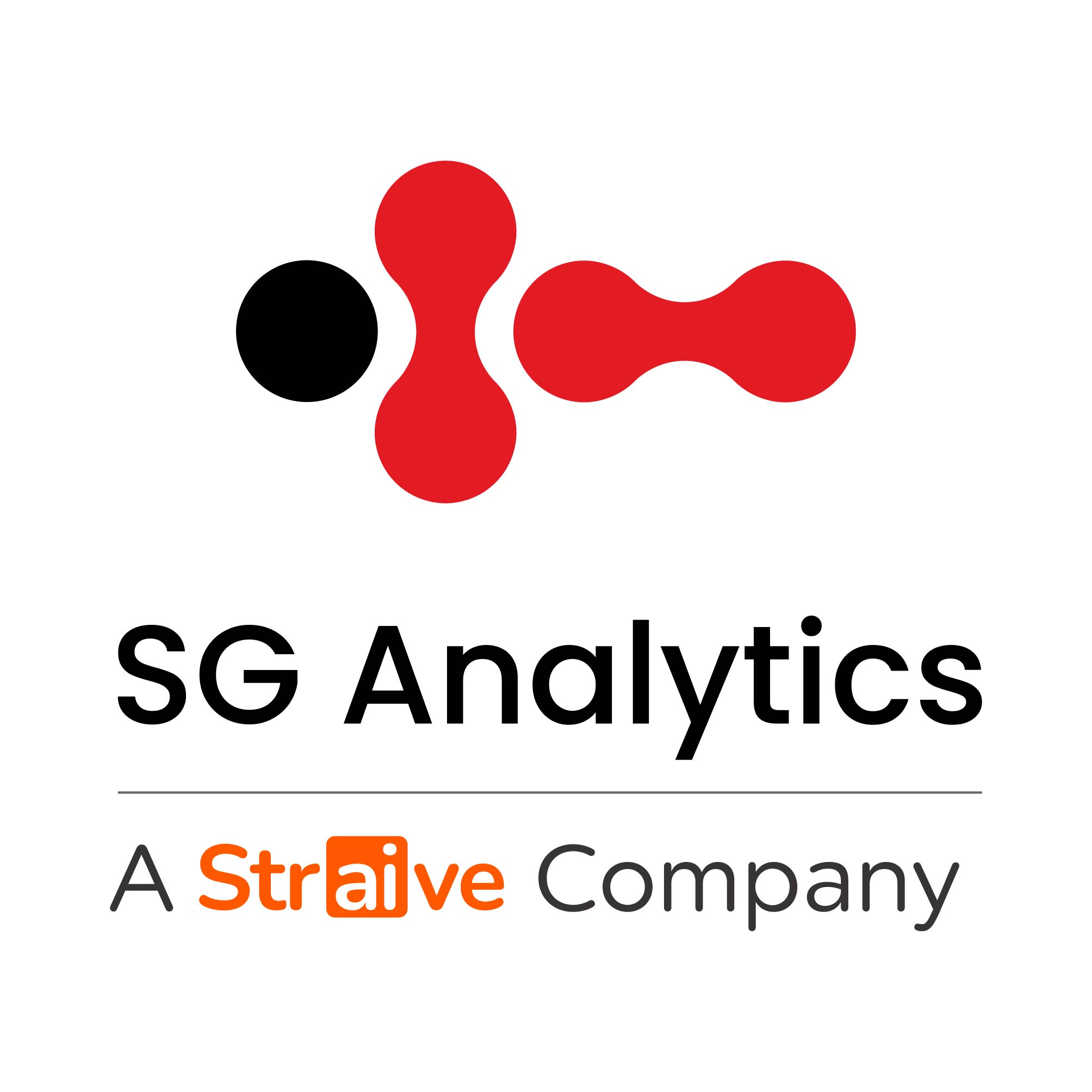The adage “knowledge is power” has never been truer than it is in today’s rapidly evolving business environment. After all, companies must constantly stay abreast of the industry dynamics to remain competitive.
The internet has triggered a massive explosion of freely available content, which anyone can use anywhere and anytime. Companies can process and structure this data to frame actionable insights and use it for business gain. This trend has spawned the development of competitive intelligence.
Definition of Competitive Intelligence
According to the society of competitive intelligence professionals (SCIP):
CI is the process of ethically collecting, analyzing, and disseminating accurate, relevant, specific, timely, foresighted, and actionable intelligence regarding the implications of the business environment, competitors, and the organization itself.
Competitive intelligence is essentially a process through which a firm gathers all publicly available information about the industry, competitors, and regulatory environment. ↵
Later, an analyst or manager can use this information to examine the macro environment. Doing so helps identify underlying risks and uncover novel business expansion opportunities in the marketplace. That allows the firm to adapt its strategy to the current market situation going forward.
This approach helps companies develop adequate risk mitigation plans that decrease their response time and increase their resilience.
Understanding Competitive Analysis
Consumers are more likely to research a product or service before buying it. So, you want to study how your competitors optimize their marketing and brand awareness campaigns to attract customers. If you compare those campaigns with your in-house efforts, you can evaluate the difference between their marketing effectiveness.
Likewise, tracking the rivals’ press releases and live event announcements allows brands to estimate the business strategies their competitors might employ. They also get to prevent unacceptable practices at a rival firm, like idea theft.
For instance, if a rival company acquires a startup focused on green technology, it is likely to target sustainability compliance improvements. However, if it copies your products or intellectual properties, you can prevent it from exploiting your brand reputation and in-house innovation through litigations.
Therefore, competitive analysis facilitates comparative studies revealing the performance gaps and competitors’ ethical or unethical strategies that can affect your position.
Do Companies Across the World Invest in Competitive Intelligence Efforts?
Yes, companies across the globe engage in CI studies. A SCIP study found that most Fortune 500 companies in the US conduct competitive intelligence activities.
Companies operating in North America with intelligence budgets of more than $1 million have increased their corporate intelligence program budgets from 5% to around 10% of all budgets as of 2013. This trend is also growing in Asia and Europe, where companies with more than $2 million in intelligence budgets did not exist five years ago. Still, they represent 2-3% of all intelligence budgets today.
Source: Survey conducted by The Relevancy Group in June 2016 across the US region
Some industry-wise stats as per the latest Fuld & Company’s Global Benchmarking Project Update:
-
Pharmaceutical and biotechnology companies represent 27% of all intelligence efforts, spending more than $2 million per year.
-
Traditional manufacturing and technology/telecommunications firms represent 18% of all those sectors that annually spend more than $2 million on competitive intelligence.
-
Technology and telecom firms also represented the largest single group of companies, spending more than $1 million yearly on this effort. This group has quietly shifted from investing almost nothing five years ago to increasing their spending across all budget brackets.
Is Competitive Intelligence Legal?
All data collection activities in the CI process are legal. It should not be confused with corporate or industrial espionage, which uses unethical methods to gain an unfair competitive advantage. There is a thin line of difference between the two. The former is legal and widely practiced worldwide. However, the latter involves data theft and sabotage in rival organizations, having severe legal implications.
Importance of Competitive Intelligence in Business
CI is important to make informed business decisions, considering the business environment and competitor activities. This exercise helps companies make strategic decisions irrespective of their size and structure.
Every organization, whether a startup or a Fortune 500 company, needs access to reliable market information to optimize its strategies. Competitive intelligence fulfills this demand for credible information availability.
Key Components of Competitive Intelligence
-
Market Research
Introducing a new product or improving the current one requires data concerning customer pain points, expectations, and competition. Therefore, market research (MR) professionals interview clients, strangers, and employees.
They also test products in real-world situations, controlled environments, and computer simulations. Primary MR activities encompass these methods to compile reports describing product performance.
Meanwhile, secondary researchers monitor media platforms, social networks, industry magazines, and relevant research journals to get business-critical data. Their work can also reveal what consumers feel about your offerings and brands.
-
Competitor Analysis
Each industry has multiple corporations serving identical offerings. While robust inventions enable enterprises to differentiate themselves from competitors, commercially viable innovation is rare. So, analyzing and countering how business rivals strategize their growth is essential.
Competitor analysts can leverage market intelligence, social listening, and advanced analytics to compare enterprises based on their historical performance. Reputable firms also empower client organizations to predict competitors’ next moves.
-
SWOT Analysis
Business strengths include supply chain sustainability, significant market share, and operational efficiency. However, frequent disruptions at factories or high employee attrition will be weaknesses threatening a corporation’s long-term interests.
SWOT analysis evaluates how strategic strengths, procedural weaknesses, market opportunities, and macroeconomic threats influence your brand’s growth potential.
Introduction to Competitive Intelligence Tools
-
Visualping
It monitors competitors’ websites for pricing, design, job boards, and press release updates. Besides, Visualping serves more than 1.5 million corporate users. They insert the webpage addresses and specify the on-screen elements they want to track.
Configuring alert recipients’ email IDs and scanning frequency are the final steps for most users. However, you can further customize Visualping’s features.
-
BuzzSumo
It automates content analysis, providing insights into business rivals’ content strategies. The scope of BuzzSumo’s results comprises article length, posting media, and content that users seek the most. Moreover, you can explore industry-relevant influencers and conduct comprehensive content research.
This competitive intelligence tool finds the best quality content by a competitor with impressive consumer engagement statistics. Therefore, you can optimize your content strategy for maximum impact.
-
Wappalyzer
It extracts rival’s website technology data, giving you a holistic overview of which tools and plugins a rival brand employs on its business web pages. It can also conduct specific customer relationship management (CRM) tasks like verifying corporate emails.
Companies use Wappalyzer to list rival firms using a technology tool to grow in leads in the target industry. For example, how many of your rivals use Shopify, Hubspot, WordPress, or Mailchimp? You can study such questions and Wappalyzer’s results to decide whether to switch tech integrations.
How to Integrate Competitive Intelligence into Your Business Strategy
-
Know Who You Want to Track
CI operations can become expensive, requiring extensive IT resources and skilled analysts. Therefore, business leaders must determine the primary targets for competitive intelligence activities. After all, you want to compete with those rivals who surpass you in market share, substantiality compliance, consumer ratings, and independent research.
If leaders believe a startup is likely to introduce industry-disrupting inventions, they can also leverage CI technologies to monitor the target startup’s evolution.
-
Finalize the Core Competitive Metrics
You can gather data on a few performance aspects or broaden the data collection scope depending on why and when you utilize the game-changing competitive intelligence tools. For instance, tracking a local business will involve fewer metrics than developing CI for global brands.
The more metrics you request from CI providers, the greater the financial burden. So, conduct multistakeholder meetings, collect feedback, and prioritize the critical metrics.
-
Explore Data Sources and Select the Authoritative Ones
Several reputable publishers are prone to posting unverified, biased, or manipulated data due to human errors and trend-jacking rush. This situation highlights the need for validating the competitive intelligence you acquire before integrating it into business growth strategies.
Nevertheless, experienced professionals can assist you in categorizing data sources according to their authoritativeness and quality. You will want to restrict the data gathering scope to the best sources. Doing so will help reduce data validation needs, generating results fast.
-
Collect Data, Analyze It, Report CI Findings, and Revise Strategies
Once you have a list of primary rivals, competitive metrics, and reliable data sources, determine a data acquisition strategy. Simultaneously, managers must develop or procure appropriate competitive intelligence tools.
Collect the desired data and let CI analysts extract actionable insights. Later, you can document their recommendations, host brainstorming sessions, and change the strategy to implement them based on finalized team inputs.
Conclusion
Given the importance of competitive intelligence in providing strategic direction, intelligence budgets will increase over the next few years. However, setting up an in-house competitive intelligence department entails considerable expenditure, which small and medium organizations may avoid. Thus, selecting a trustworthy partner to drive a CI effort based on your requirements is of utmost importance.
SG Analytics, recognized by the Financial Times as one of APAC’s fastest-growing firms, is a prominent insights and analytics company specializing in data-centric research and contextual analytics. Operating globally across the US, UK, Poland, Switzerland, and India, we expertly guide data from inception to transform it into invaluable insights using our knowledge-driven ecosystem, results-focused solutions, and advanced technology platform. Our distinguished clientele, including Fortune 500 giants, attests to our mastery of harnessing data with purpose, merging content and context to overcome business challenges. With our Brand Promise of “Life’s Possible,” we consistently deliver enduring value, ensuring the utmost client delight.
FAQs (Frequently Asked Questions) – Competitive Intelligence
CI offers SWOT data and reveals where a business stands regarding competitive pros and cons. Managers can leverage these insights to re-prioritize their efforts based on business weaknesses that reduce companies’ competitiveness. Therefore, they become better decision-makers and leaders while developing realistic growth strategies.
Competitive intelligence is not exclusive, and modern cloud platforms have democratized several CI technologies. All enterprises worldwide can select the free or beginner packages that CI companies might provide to assess whether competitive intelligence can help business growth. If a small business lacks in-house talent to configure CI systems, it can consult third-party organizations or outsource the data operations.
Although CI development is ethical, legal threats are imminent if a target firm suspects potential espionage efforts. Besides, acquiring competitive insights concerning a global company involves processing multilingual and unstructured data. So, applying advanced analysis, natural language processing (NLP), and context identifiers is crucial, albeit expensive.
Most CI tools offer free trials, no-cost subscriptions, or first-usage deep discounts. While Google Analytics, Semrush, Ahrefs, and Visualping offer free plans, other CI tools provide time-limited free access. However, many platforms have “free tools” that micro-companies can utilize for limited competitor research.

